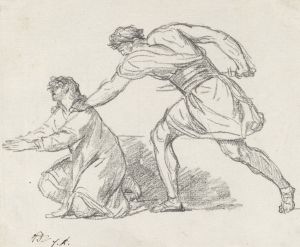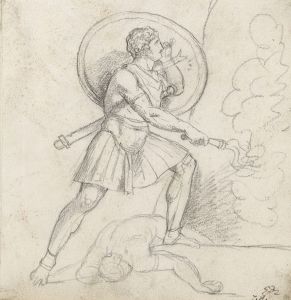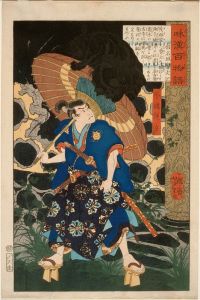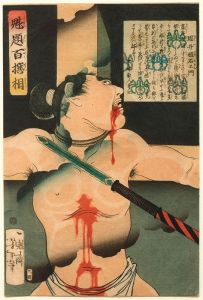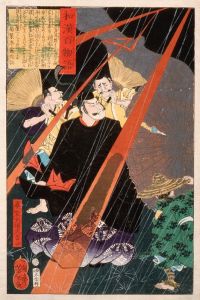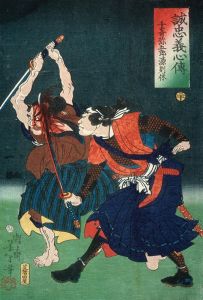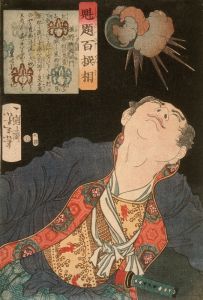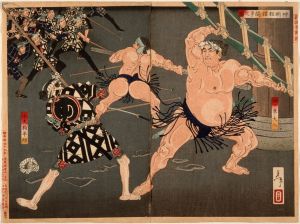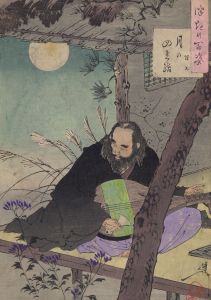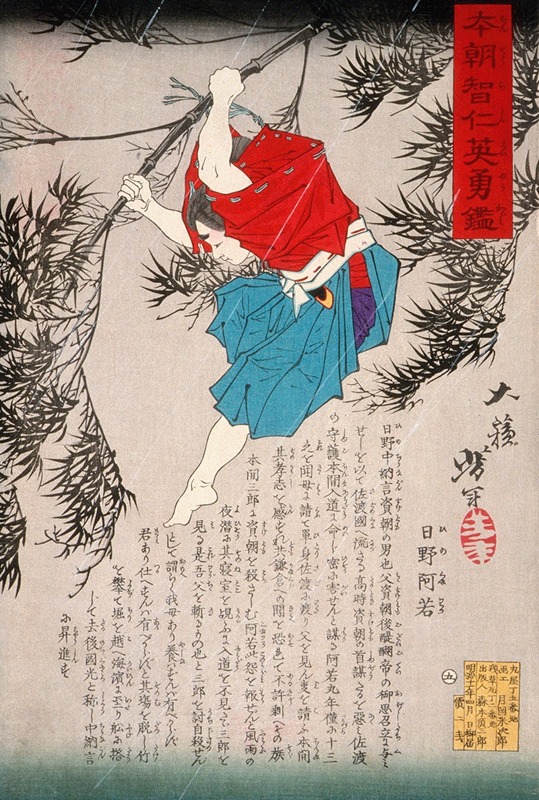
Hino Kumawaka Leaping from Bamboo
A hand-painted replica of Tsukioka Yoshitoshi’s masterpiece Hino Kumawaka Leaping from Bamboo, meticulously crafted by professional artists to capture the true essence of the original. Each piece is created with museum-quality canvas and rare mineral pigments, carefully painted by experienced artists with delicate brushstrokes and rich, layered colors to perfectly recreate the texture of the original artwork. Unlike machine-printed reproductions, this hand-painted version brings the painting to life, infused with the artist’s emotions and skill in every stroke. Whether for personal collection or home decoration, it instantly elevates the artistic atmosphere of any space.
Tsukioka Yoshitoshi (1839–1892) was a renowned Japanese artist known for his work in the ukiyo-e genre of woodblock printing and painting. One of his notable works is "Hino Kumawaka Leaping from Bamboo," which is part of his series "New Forms of Thirty-Six Ghosts" (Shinkei Sanjurokkaisen), created in the late 19th century. This series, completed between 1889 and 1892, is celebrated for its imaginative and often eerie depictions of supernatural themes, drawing from Japanese folklore, history, and literature.
"Hino Kumawaka Leaping from Bamboo" illustrates a dramatic scene involving the historical figure Hino Kumawaka. Kumawaka was a young boy who became a legendary figure in Japanese folklore due to his daring and cunning actions. The story of Kumawaka is set during the Kamakura period (1185–1333), a time marked by the rise of the samurai class and significant political upheaval.
According to the tale, Kumawaka's father, Hino Suketomo, was executed by the Kamakura shogunate. Seeking revenge, Kumawaka devised a plan to assassinate the shogunate official responsible for his father's death. The artwork captures the moment Kumawaka makes his escape after successfully carrying out his mission. In Yoshitoshi's depiction, Kumawaka is shown leaping gracefully from a grove of bamboo, symbolizing his agility and resourcefulness.
Yoshitoshi's portrayal of Kumawaka is notable for its dynamic composition and attention to detail. The artist skillfully uses the vertical lines of the bamboo to enhance the sense of movement and tension in the scene. Kumawaka's expression and posture convey a sense of determination and youthful bravery, capturing the essence of his legendary status.
The "New Forms of Thirty-Six Ghosts" series, including "Hino Kumawaka Leaping from Bamboo," reflects Yoshitoshi's fascination with the supernatural and his ability to blend traditional Japanese themes with innovative artistic techniques. This series was created during a period of significant change in Japan, as the country was transitioning from the Edo period to the Meiji era, which brought about modernization and increased interaction with Western cultures. Despite these changes, Yoshitoshi remained committed to the ukiyo-e tradition, while also incorporating new influences and ideas into his work.
Yoshitoshi's art is characterized by its vivid colors, intricate details, and emotional depth. His ability to convey complex narratives through visual art has earned him a lasting legacy as one of the last great masters of the ukiyo-e tradition. "Hino Kumawaka Leaping from Bamboo" is a testament to Yoshitoshi's skill in storytelling and his deep understanding of Japanese cultural and historical themes.
Today, Tsukioka Yoshitoshi's works, including "Hino Kumawaka Leaping from Bamboo," are highly regarded by art historians and collectors. They are appreciated not only for their aesthetic beauty but also for their cultural significance, offering insights into the folklore and historical narratives that have shaped Japanese identity. Yoshitoshi's legacy continues to influence artists and inspire admiration for the ukiyo-e tradition, ensuring that his contributions to Japanese art remain celebrated and studied.





